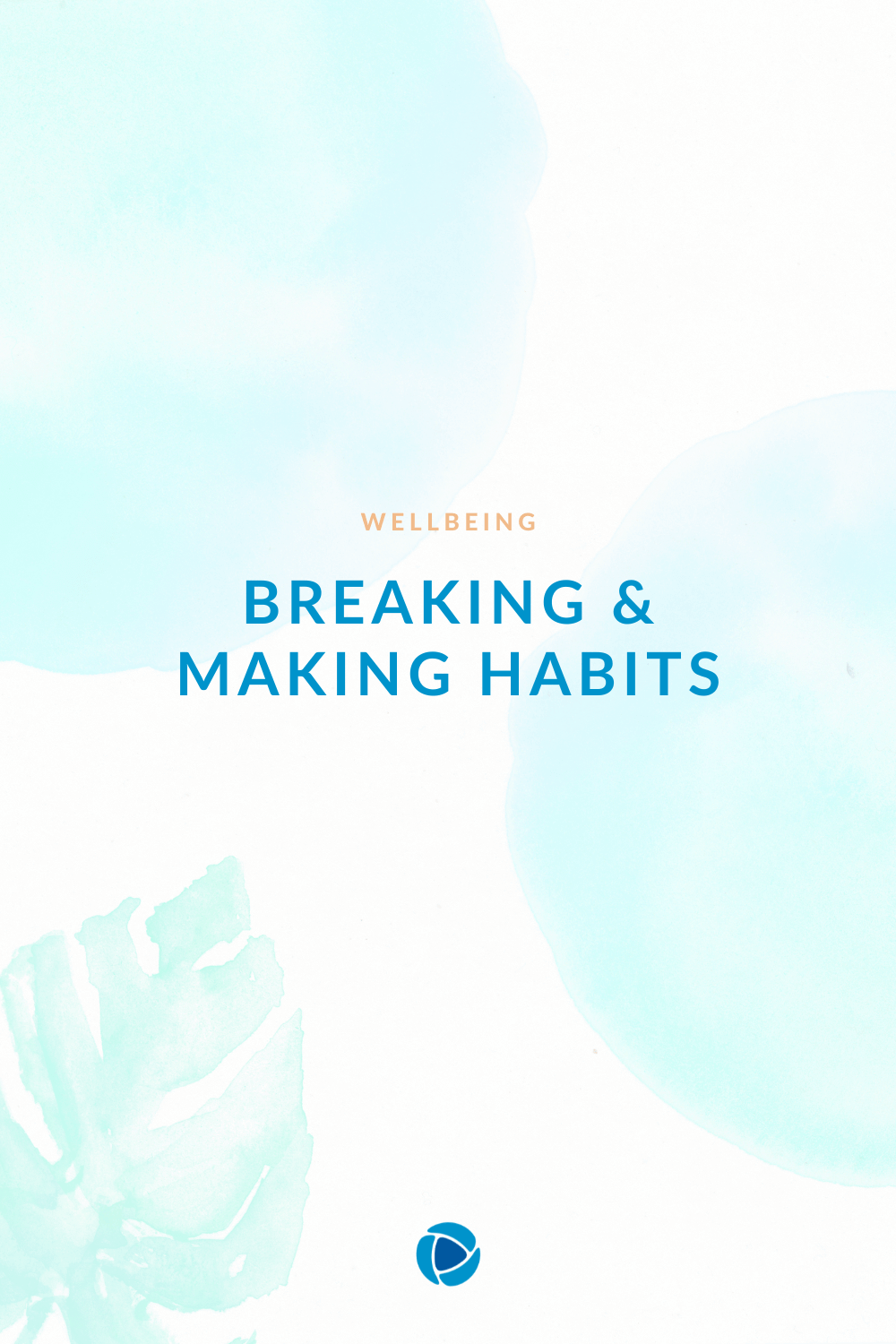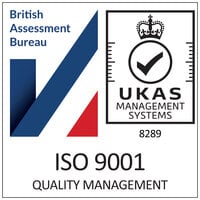
September 20, 2020
Breaking and Making Habits
Before we talk about ways of creating good habits and breaking the bad ones, it’s important to understand what habits are and how they’re formed. Most of the things that we do every day are the result of habits. You know when to brush your teeth or how to get dressed. Whether you have a sandwich or a bowl of cereal for breakfast, is a result of habit. Essentially, a habit is a behaviour that you perform automatically without thinking about it. By automating common actions, our brain frees up mental resources for other important tasks that help us be more creative and productive.
We have habits because at some point in our lives we have chosen to engage in a particular behaviour which has then resulted in a reward, whether it’s the feeling of a clean mouth or the satisfaction of a craving. Essentially, environmental cues act as a motivational force to perform the action which in return provides us with a reward of a personal sense of relief or satisfaction. Of course, we probably have developed habits which might not be as helpful and as good as others but still satisfy our desires. Whether it’s smoking, nail-biting, eating junk food or excessive exercise, these behaviours tend to have a negative impact on our health and mental well-being.
I’m sure that everyone can think of a habit or two which they want to overcome or have already overcome in the past; my personal experience of this is from when I was at university, I used to eat a lot of unhealthy food under stress. My diet at the time mostly consisted of sweets, chocolate and energy drinks. Whether this was caused by upcoming exams or deadlines, I used to have this lingering desire to eat, even though I didn’t feel hungry. Whilst this would comfort me and provide me with a short sense of relief, I felt angry, annoyed and guilty with myself for conforming to eating these unhealthy foods. To break this bad habit, I started by implementing breathing exercises every time I felt anxious or stressed. Then, I started to gradually reduce the amount of sugar I had every day and not just on the stressful ones. I stopped adding any sugar to my hot drinks, substituted energy drinks with a glass of water and replaced sweets and chocolates with fruits and healthier snacks. Since then, I have stopped eating unhealthy stuff under stressful situations and developed conscious awareness of stress and what I eat. Now, every time I feel stressed or anxious, I perform deep breathing exercises and satisfy my sugar cravings with healthier choices. Just to note; this is not something that just happened overnight. It required dedication and consistency to replace my old routine with a new one. This process wasn’t easy at all and there have been struggles of an occasional snack here and there because either my friends were offering or I simply had some sweets at home. Of course, I have felt guilty with myself but I have realised that it’s okay and natural to make these mistakes. Essentially, I have started saying no to people when they have offered anything sweet and I have excluded any unhealthy choices from my shopping list. In fact, when I was out shopping, I avoided the sweets and crisps aisles to limit the chances of me buying anything from there. This has helped me a lot with my awareness of what I buy. This is not a one-size-fits-all approach as everyone has their own habits. Therefore, there are different ways of changing the behavioural patterns, that differ from person to person.
There are many mistakes we might fall victim to when trying to change our behaviour, so here are some of the things that you should be aware of if you are trying to break your bad habits.
1. Trying to build or quit many habits at the same time
Habits take time to build, so whilst there might be many things you want to change, trying to break them at the same time is likely to result in a failure. Focusing on one habit at the time is more manageable and creates a gradual and sustainable change.
2. You don’t know why you are doing it
This is a common mistake. You need to have a certain goal if you want to change your desired behaviour. Think about breaking the goal down; why is it important for you to achieve this? For example, running. Do you want to be able to run a marathon or simply get physically healthier? If you will not have a specific goal in mind you are less likely to be motivated and succeed in achieving your desired goals.
3. Losing focus
Distractions are inevitable. This process requires time, motivation and dedication. Journalling can help you keep on track. If you’ll face any struggles, write down the situation, where you were, how it made you feel and the resulting behaviour. Over time, you may be able to spot any patterns or specific triggers that are impacting your success.
4. Lack of consistency
It takes time! Creating a habit is not a process that happens overnight. For example, weight loss. It’s not something that just happens because you have been to the gym once and had one healthy eating day. It simply takes time and being persistent is key in achieving your target. Be patient.
5. Not changing your environment
Our lifestyles are the product of the environment we live in. If you are trying to stop smoking and you are surrounded by smokers, it is going to be challenging to break that habit. If your environment will not change, your habits will not either.
6. Not finding the right way for you
Experiment and find a solution that fits you. It can be easy to follow what you see people doing on social media or within your friend group, but remember that behaviour change is a personal endeavour and will require experimentation about what works for you.
Drawing on the work of Charles Duhigg, whose work and research on habit formation has influenced millions worldwide, replacing old habits with new ones relies on identifying three components:
- The cue
- The routine
- The reward
A cue can be environmental or internal triggers that cause the habitual behaviour to happen. Cues aren’t always obvious, so you may want to start by writing down key information about the habit. Research shows that cues typically fall into one of five categories: time (what time was it?), location (where were you?), emotional state (how did you feel before it happened?), other people (who were you with?) and the preceding action (what were you doing immediately before the urge hit?). Doing this as a reflective exercise and tracking your habits will help you to identify the cue that triggers the behaviour.
To understand your own habits, you need to identify the components of your loops. Once you’ve diagnosed the habit loop of a particular behaviour, you can then look for ways to replace old routines with new ones.
Questions to keep in mind:
- What is the behaviour that you’d want to change?
- What is the cue for this routine? Is it the location, the emotional state or other people around you of a preceding event?
- What is the reward your habit sought to satisfy? Is it the socialising, temporary distraction or change of scenery?
Rewards satisfy cravings, so it is important to identify the cravings that drive behaviours. For example, you feel the urge to go to a cafe on your break to buy a coffee. Is it the break from work that you are craving or is it the coffee because you need the energy boost? Are you going to a cafe to socialise? You might want to experiment to see what satisfies your cravings. For instance, instead of walking to the cafe, you might go outside for a walk without buying the coffee. The next day, you will go to a cafe and buy an apple and eat it whilst having a conversation with someone. What you choose to do instead of going to buy a coffee, is not important. The point is to test these different hypotheses to determine which craving is driving your routine. As you’ll test these different rewards, write down your emotions, thoughts and reflect on how you are feeling. Current research shows that it can take anywhere from 18 to 254 days for a person to form a new habit, but on average it takes about 66 days for a behaviour to become automatic. This can vary as a result of things like individual differences and the habits we’re trying to replace, so don’t put pressure on yourself to enforce any radical behaviour change until you’ve figured this out.
Changing habits first involves establishing why you want to change it, then beginning to work through that feedback loop. So finding the cue, or trigger, identifying the routine or behaviour and then working out the reward. We all get off track sometimes and it’s OK to fail and make mistakes along the way. It is not an easy task to change deeply ingrained behaviours, so rather than beating yourself up, visualise yourself succeeding. Remember to be realistic and take it gradually. You are more than capable of breaking these bad habits and creating new healthier routines instead.
There are great resources available online about different ways of breaking habits, Charles Duhigg provides great examples and ways of identifying your habitual loops.
Get the latest news with
Thrive Unplugged!
Sign up to our monthly newsletter to receive the latest news on everything Thrive Mental Wellbeing.




